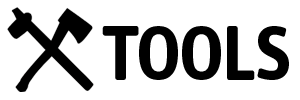The Saw: Part Three
“I Do Not Cover Everything”: An Inexhaustive Index of the Crosscut Saw
“I do not cover everything. Sharpening, a complex and exacting art, is left for the reader to discover in Warren Miller’s excellent publication, Crosscut Saw Manual (1977, rev. 2003)*. I also will not cover complex felling techniques.”
— David E Michael, Saws that Sing: A Guide to Using Crosscut Saws
Each tool acquires an intimate vocabulary, decipherable only to its operator. Manuals will get you nowhere if you do not know the heft and give of your instrument, the sounds produced when variously applied. Nonetheless, stories are revealed in terminology.
Using the broadest designations, there are one-person crosscut saws, with asymmetrical blades and D-shaped handles, and symmetrical two-person crosscut saws with detachable pin-style handles. From these, categories and features proliferate like fungi on a felled branch.
The lexicon of the crosscut saw is not entirely opaque. The words are familiar, even comfortable. It’s the size of the index that alienates. The six-century-old tool is composed of more parts than meet the eye. It is the sum of its relationships to humans, wood, slope, tension, area, and gravity. Indices are also tools, useful for illuminating the epistemological distance between word and experience.
An Inexhaustive Index of the Crosscut Saw
Anvil
–Handheld
Arc
Ax
–Double-bit
–Single-bit
Ax stone
Bevel filed
Bind
–Bottom
–End
–No
–Side
–Top
Bolt
–Slotted
Bucker
Buckle
Bucksaw
Chatter
Circle
Clearance
Cut
–Back cut
–Compound
–Offset
–Sloping
–Straight
Cutting zone
Compression
Crosscut saw
–Crescent-taper-ground
–Five-foot lance-tooth
–Modern “M tooth” Homesteader
–Straight-Taper-ground
Depression
Face
Fiber
File
–Triangular
Gauge
–Pin
–Raker
Gravity
Gullet
–Raker
Handle
–Climax style
–D-shaped
–Loop style
—Pacific Coast model pin style
–Pin style
–Supplementary
Hammer
–Saw
–Single-jack
–Swing
Hone
–Side
Jointer
–Long
Lean
Log
–Skid
–Suspended
Lubricant
Naval gel
Notch
Pin
Pitch
Point
Pumice grill block
Rake
Raker
–Swedged
Reference plane
Rivet
Root wad
Running rough
Saw
–Felling
–Flatground
–Hand
–One person bucking
–Peg and raker
–Two-man
–Two-man felling
Saw pit
Saw vice
Sawdust
Sawyer
Set
Shaving
–Long
–Thin
–Whiskered
Sheath
–Flexible
–Rigid
Slope
–Side
Spider
Spring poles
Straightedge
Stroke
–Pull
–Push
Stump shot
Teeth
–Champion
–Cutter
–Great American
–Lance
–M
–Peg
–Perforated lance
–Plain
Tension
Tolerances
Underbuck
–Mechanical
–Single
Valley
Vibration
Wedge
–Bucking
–Double-taper
–Felling
–Hanging
–Rifted single-taper
–Splitting
–Tie
–Triple-taper
Well-tuned
Wingnut
Wood
–Green
–Holding
–Sound
–Unsound
–Wet

Alisha, wanna do another?
A million times yes.